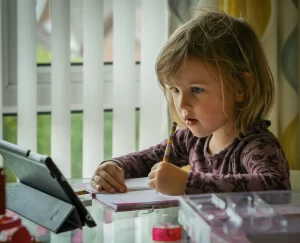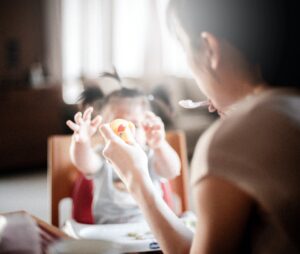By Iris Farrou
18 Sep, 2023
Diet & Exercise, Lifestyle Tips, Mental Health, Prevention, Queer Health, Reproductive health, Sexual health, Women's Health, Young adults & teens
Bisexual, Buffalo NY, Gay, Gender Identity, gender non-conforming, healthcare, How do I find a gynecologist if I'm LGBTQ, How do I find an LGBTQ doctor, Inclusive OBGYN Care, Lesbian, LGBTQIA+, Non-Binary, OBGYN for queer couples, Queer Friendly Doctor, queer health, Queer-Friendly OBGYN, sexual orientation, Transgender

If you belong in the LGBTQ community, you probably know that coming out is constant and not a “rip off the bandaid processm,” as it happens every time you meet someone new. Seeking a medical provider, and specifically an OBGYN, as a queer person can be challenging; if you already have a provider but have not discussed your sexual orientation or gender identity with them, it may be time to prepare for a coming out discussion.
Why does it matter?
It’s understandable you may want to avoid another discussion about your sexual orientation and/or gender identity, but when it comes to healthcare this is vital information so you can get the best possible healthcare. A queer ally doctor would be knowledgeable on the health risks a queer person faces. If you are seeing an OBGYN, being open with them about your sexual orientation is important in getting the care you deserve: proper exams and vaccinations, contraceptive methods (if needed), safe sex and risk factors education, and other preventative care. For example, if you are a lesbian couple trying to conceive, your OBGYN should be your strongest advocate in this process. If you are transitioning, your OBGYN should oversee your hormone intake and be there for you through your hormone replacement therapy, helping you remain healthy both physically and mentally.
How to Find a Queer-Friendly Provider
Whether you are considering coming out to your current doctor or looking for one, it’s good to look for queer friendly signs in a practice: you can inquire whether they have LGBTQ+ patients, or if there are doctors who focus on queer health and are more knowledgeable and experienced. You can also ask for referrals through your community: especially when it comes to finding an OBGYN, word of mouth and personal credibility go a long way. If you are nervous about your initial appointment you can ask a friend or trusted family member to come with you. Sometimes you can also authorize your partner or spouse to speak with your doctor on your behalf about certain matters–should you feel comfortable doing so–or be with you during the appointments.
What Should Providers Do?
Don’t think this should be a one-way street: not all falls on you when you want to ensure a practice is queer friendly. Providers can specifically showcase they are LGBTQ friendly, and a safe space, by doing some of the following:
- Displaying equality symbols in their office and/ or website
- Specifically stating they are knowledgeable about the LGBTQ community and are allies
- Have a visible non-discrimination statement
- Customize their patient intake forms to be appropriately inclusive
Meet the Standards of Practice: a set of recommendations created by the Massachusetts Department of Public Health to improve LGBTQ access to quality care
More
By Iris Farrou
22 Aug, 2023
Childhood Health, Early Childhood Education, Fatherhood, Mental Health, New Moms, Parenting, Prevention, School, Toddler Health, Young adults & teens
abandonment, adjusting to change, Childhood Trauma, elementary school, faking sick, help my child adjust to school, high school, homesickness, how to help my child feel comfortable at school, issues, middle school, morning anxiety, morning routine, Preparing for school, preschool anxiety, school safety, separation anxiety, stomach aches before school, teachers

With Fall just around the corner, you know that back-to-school– or first-grade–season is upon us! Getting ready for the school year is always an adjustment for families, even more so if your first-born is about to join the first grade. There may be a lot of excitement, as well as nervousness, around the situation. How can you help your child, or children, and the whole family be better prepared for the school year?
Stress and Anxiety
It’s not unusual for first-graders to experience anxiety that takes the form of tummy aches or headaches, especially on Monday mornings or Sunday nights. Sometimes, you may even get a call from the school that your child is feeling unwell. These are not lies, nor are children faking discomfort in order to stay home. They are experiencing discomfort due to the anxiety of being away from home.
- Establish a morning routine that makes your family feel more connected; you can spend some extra snuggle time with your child, especially on Monday mornings, and allow enough time to have a good breakfast as a family.
- Especially in the first few weeks of school, you may want to get there early to cement the goodbye-routine: reassure your child that you are always available during the day if they need you, and remind them that they are safe. Remember that this can feel very daunting for a child, as they are spending a lot of time away from home–which they know as a safe place–and they are surrounded by new people in a new environment.
- Share your own stories from school, and bond over those memories with your child. It will make them feel much more comfortable to hear that their role model was also nervous going to school, or had the same issues as them. Sharing stories and experiences openly will not only enhance your child’s trust towards you, but it will reassure them that what they are feeling is normal.
- Be early for pickup time; your child’s separation anxiety is volatile until they fully adjust to school, and they are really looking forward to seeing you and feeling safe that they are going home. As the school day reaches its end, their expectation and nervousness heighterns: it is of immense importance that they see you waiting for them during pick up time, and are not left wondering or feeling abandoned.
Familiarity and Safe Spaces
Even if your child has attended pre-school, going to grade school is another can of worms… in addition, it is a new school and they don’t know what it looks like or what to expect. How can you help them feel secure about this change?
- Visit the school with them, walk through the campus and be present in this new space where they will be spending a lot of time without you. Trivial as it may sound, it will help your child tremendously to know what their future classroom will be like, where they will be sitting, where the restrooms are, the cafeteria, exit and pickup point, main office, etc.
- Meet the teachers if you can, as essentially they will be the “replacement” caretakers and safe people for your child while they are at school. If you can facilitate building trust and rapport with your child’s teachers before the school year begins, then your child will feel more comfortable in their expectations.
- Talk through the curriculum with your child, and explain what expectations come with grade school. It’s a new structure, so the more you can explain to them what their day will look like, what they will be doing at this new school, and what they will be doing at home as a learner, the better prepared they will be when they hear “homework” is expected to be completed.
As much as we would like to keep our children in a bubble, we all know that this is not possible. However, there is nothing more important than preparing for the school year as a family and validating your child’s anxiety–both before the school year starts and during the school year. Fingers crossed, this new school year will be filled with excitement and happiness! Remember that you and your child are a team in this, and you should always be able to reach out to the school for support if need be.
https://www.wikihow.com/Adjust-to-a-New-School
https://www.mayoclinichealthsystem.org/hometown-health/speaking-of-health/back-to-school-tips-to-help-students-adjust
https://www.ahaparenting.com/read/Help-kids-adjust-school
More
By Iris Farrou
18 Aug, 2023
Childhood Health, Early Childhood Education, Fatherhood, Lifestyle Tips, Mental Health, New Moms, Parenting, Toddler Health, Young adults & teens
Abuse, Accident, ACE, Childhood Illness, Childhood Trauma, Children, Community, Divorce, Family Dynamic, Financial Stress, Grieving, Kids, Mental Health, Neglect, Nightmares, Pediatric, Pediatric Mental Health Care, PTSD, Teenager, Toddler Trauma, Trauma, Traumatic Childhood Experiences, Violence, Witness, Witnessing

When we’re getting ready to start a new family, we may find ourselves reflecting on our own childhood experiences, and comparing with our partner how each person grew up– perhaps the goal of this introspection is to create a new family that is healthy, happy, and flourishes with good communication. If you are in the process of family planning, you may want to take into account ACEs: Adverse Childhood Experiences.
What are they?
Adverse Childhood Experiences are traumatic events children experience between the ages of 0-17. These have long lasting effects, may lead to chronic health conditions, and people address them well into adulthood. It is important to remember that ACEs affect a child’s brain, and how they experience the world.
ACEs are quite common, with 60-80% of US adults reporting they have had at least one adverse childhood experience up until age 17, and 1 in 6 US adults saying they’ve had four or more. The most potentially traumatic ACEs can include experiencing violence, abuse, or neglect in the home, neighborhood, or school, witnessing violence in the community or otherwise living in a dangerous environment (war zone, poverty stricken areas, etc.), going through a natural disaster, witnessing serious injuries or the death of another person, losing a loved one or experiencing parental loss due to separation. However, this is by no means an exhaustive list of possible ACEs: any event that may cause trauma and long-term stress can be classified as an adverse childhood experience that adversely affects a person as an adult.
How do I know if my child has had an ACE?
The effects of a traumatic or stressful event may not be immediately visible, or take place soon after the traumatic event has occurred. If your child confides something in you that would be traumatic, then that is a clear indication of an event that would warrant immediate support–with the assistance of a mental health professional who specializes in children or teenagers.
Additionally, if you are going through something as a family, such as a divorce, death, fatal accident or illness, natural disaster, poverty, community violence, unemployment, housing and/or financial insecurity, you may want to address those events as potentially traumatic for your child. We cannot always correct or control life’s adversities, but we can recognize them for what they are and present this as a starting point to healing. If you recognize, as a family, that an event has been traumatic then this shows to your child that it’s ok for things to not be “normal”–that it’s part of life, and that our reactions or daily life will change when something happens.
If there is an event or experience that you do not know about, once your child has had time to process the experience you may start noticing signs of trauma that could include, but are not limited to: difficulty sleeping or having nightmares, wetting the bed, changes to their mood, fear of other people, difficulties in school, avoiding situations, events, or people (these may be directly associated with the traumatic event), as well as difficulty showing affection towards family and friends–especially if this is a change from their usual behavior.
How can we avoid ACEs?
The unfortunate truth is that we cannot completely eliminate ACEs, as much as we may want to. What we can do, however, is raise awareness about them so that we can all start thinking differently about childhood trauma. Historically disadvantaged populations are more susceptible to trauma, but that does not mean that everyone else is excluded. The causes may be societal, historical, natural forces, or people, but each one of us can help lessen the blow of an ACE: whether you are a parent, friend, caregiver, teacher, or neighbor. Raising awareness of ACEs means switching the focus from individual responsibility to community solutions: we can all help prevent ACEs, and help children develop strong coping mechanisms. It is important to reduce the stigma associated with parents who struggle to provide a safe environment for their children, and seek community and/or government support to do so. It is also important to remember that any one of us can promote safe, stable, and nurturing environments where children are present.
https://www.cdc.gov/violenceprevention/aces/fastfact.html
https://my.clevelandclinic.org/health/symptoms/24875-adverse-childhood-experiences-ace
More
By Iris Farrou
29 Jun, 2023
Lifestyle Tips, Mental Health, Prevention, Queer Health, Reproductive health, Sexual health, Women's Health, Young adults & teens
Bisexual Sex Health, Can Lesbians get STDs?, Do I have AIDs, Do I need a PAP smear, Do Lesbians Need to See Gynecologist, gay woman, Gender Identity, Lesbian, Lesbian Sexual Health, Non-binary Health, Nonbinary, Queer Sexual Health, queer woman, Safe Lesbian Sex, Sex Health, Transgender

If you were a queer woman growing up in the 80s and 90s, your sex education probably consisted of mostly heteronormative standards, focusing on relationships between men and women, assuming heterosexuality as the standard overall. If you had a progressive teacher or parents, you may have been exposed to healthy examples of same-sex relationships (fingers crossed!). But, for most women who are now either well into their adult life or are parents themselves, there is a general lack on queer sex education. If like many of us, you have been fed myths, here are some that can be easily refuted:
Myth 1: Lesbian and Bisexual Women don’t get STIs
That is absolutely not the case. We may believe that the risk of Sexually Transmitted Infections between women is relatively low, but new research suggests this is not the case. In fact, lesbians are at as much risk as heterosexual women when it comes to getting an STI. Even if you are very careful in your intimate relationships and the risk is low, that does not mean that lesbians and bisexual women are not prone to STIs.
Along with dispelling this myth, we should bring up the fact that many women who identify as lesbians may have had sexual relations with men in the past–they may be carrying STIs without even knowing it. Consider this especially true for bisexual women, who may be sexually active with partners of all genders. Vaginas have the ability to fight off STIs naturally–to a certain level–while penises do not have that ability.
Face the Taboos
Many people in the queer community may identify as one gender, but carry the biological bits of another gender; if you are further exploring your own sexuality, or if you are parenting a child who is or is already a member of the queer community, it is important to keep this information in mind and not shy away from discussing matters of sexual health on all fronts. “The talk” has become more complicated, but it is our responsibility to remain educated and parent openly.
Myth 2: STIs Cannot be Transmitted Between Women
Bold lie. If you were ever told that, or have a partner/friend/family member who believes that–it is a lie. STIs are transmitted mostly through the exchange of bodily fluids, and some STIs are also contracted through skin-to-skin contact. Additionally, the risk of STI transmission is higher during menstruation.
Face the Taboos
STIs can be transmitted through oral to vaginal/vulva contact; oral-anal contact also places the participants at high risk of infections. STIs like herpes, syphilis, hepatitis A and intestinal (gut) infections, as well as possibly gonorrhea may be transmitted in this manner. Genital contact can spread HPV, pubic lice, and herpes. Fingers-in-vagina also carry the risk of transmitting herpes, HPV and bacterial vaginosis, trichomonas, chlamydia, and gonorrhea. This is especially true if one of the partners has been previously exposed to those STIs through an infected person. Use of toys that may be inserted in the vagina or anus can absolutely place the partners at risk of infection; washing the toys is not enough– you will only be 100% safe by using condoms on them.
Myth 3: Queer Women Don’t Need PAP smears
If the above two myths have shown us anything, it is that everyone is at risk of contracting an STI–no matter their sexual preferences. PAP smears are recommended for all sexually active women, even if they have never had sexual contact with a cisgender male. This is a good resource on HPV transmission : https://www.gmhc.org/resource_category/hiv-aids-information/
Myth 4: There is no Safe Lesbian Sex
Wrong! As mentioned above, the no-brainer would be to use condoms on toys (shared or not). Use different condoms for each partner, and when switching orifices. If you have any cuts or open sores on the mouth and lips, it is recommended that you use a dental dam during oral sex to protect yourself from contracting any STIs. Since some infections are transmitted by hands, always make sure that you thoroughly wash your hands before and after sex; if you have cuts or sores on your hands, you can always use a latex glove–or as many as you need!
Any member of the queer community has the right to respectful and knowledgeable treatment by their healthcare professionals. If you are having trouble finding queer-friendly health professionals, for any health issue, in your are or somewhere you are visiting, this resource can help you locate queer-safe providers: https://www.glma.org/
More
By Iris Farrou
22 Jun, 2023
Childhood Health, Diet & Exercise, Fatherhood, New Moms, Parenting, Prevention, Toddler Health, Women's Health, Young adults & teens, Your baby's health
Anxiety, Baby, Boost Immunity, Child, food, Good Health, Immune System, Immunizations, Importance of, Pre-Teen, Probiotics, Sleep, Strengthen, Stress, Toddler, Vaccine, Vaccines, Vitamins, Wellbeing

The first concern every parent has when it comes to their child’s health is to keep them safe as much as possible. With extracurricular activities, summer camps, and attending school being a normal part of any child’s life, and going hand in hand with exposure to germs, it is often a challenge to help your children’s immune system stay strong. There are two routes that can assist you in this struggle: diet and lifestyle.
Before we talk about details on either path, there is one undeniable basis: make sure your children are up to date on important vaccines. For all people 6 months and older, the flu shot is recommended. COVID vaccines are now safe for younger ages as well–make sure all eligible family members are immunized, and keep checking with your pediatrician about being up to date on other necessary immunizations.
Diet and Supplements
In an ideal world, you have the time to prepare the best and healthiest meals for your family, and your children are never picky eaters. That would be a wonderful movie, but it is not the truth. Though pediatricians advise against using supplements and multivitamins to enrich your child’s diet–particularly because those are not well regulated in the US and their ingredients are not guaranteed–there are certain cases when supplements are needed.
Vitamin D is the first vitamin that helps children build a strong immune system; they usually would absorb it from the sun. However, if you do not live in a sunny area, there are certain kid-friendly foods that can help with that: fortified Vitamin D milk and yogurt, and orange juice. If you are lucky enough to be able to serve your child salmon, trout, tuna, and sardines then you are raising their chances of absorbing the necessary amount of Vitamin D. To use supplements, it is suggested that you first consult with your doctor and do a blood panel to see where your child’s Vitamin D levels are at, and what supplement is most appropriate for them.
Zinc is an important mineral that assists kids’ immune system. Oysters, red meat, and poultry are the best sources of zinc, followed by beans and nuts. If your child does not accept any of these foods, consult your pediatrician on how to proceed with a zinc supplement.
Probiotics and prebiotics play an important role in our immune system, specifically because they ensure good gut health. Probiotics ensure a good balance of helpful bacteria in our bodies, and in addition to yogurts you can try giving your child fermented foods–like pickles or miso–to help with that. Prebiotics also stimulate the growth of good bacteria, and they are mostly plant fibers: green bananas or plantains, yams, asparagus.
Lifestyle
Keep in mind that a healthy lifestyle is additional to a balanced diet when it comes to fortifying your child’s immune system. If you don’t have fruits and vegetables, as well as nuts and seeds in their diet, lifestyle changes can only do so much.
However, keep in mind that children need lots of sleep for their system to function properly and recharge. 12-16 hours for infants and around 10 hours for kids is what’s necessary to assist your kids in being healthy and help keep them on a regular schedule. Additionally, exercise and keeping active can do wonders for our immune system: encourage your child to be physically active at least one hour a day in some form of activity that they like; if they appreciate sports, so much the better! Physical activity doesn’t only contribute to overall good health, but it also helps manage stress. When we are stressed, especially in cases of heightened or chronic stress, our immune system is volatile and makes us more prone to infections. Be mindful of the stress levels your child may be facing, and encourage activities that make them happy and fulfilled.
https://www.health.harvard.edu/blog/boosting-your-childs-immune-system-202110122614
https://health.clevelandclinic.org/how-to-boost-your-kids-immunity/
More
By Iris Farrou
19 Jun, 2023
Fatherhood, Mental Health, Parenting, Queer Health, Reproductive health, Sexual health, Women's Health, Young adults & teens
Adolescents, Ally, Bisexual, Gay, Gay-Straight Alliance, Gender Identity, Gender Terminology, Gynecologist, Gynecology, health, Helping my LGBTQ child, Inclusive Sexual Health Education, Intersex, Lesbian, LGBTQ, LGBTQ Youth Support, LGBTQIA+, Neurodivergent, Non-Binary, OBGYN, Pre-Teen, Pride Month, Pronouns, Queer, Sexual Behavior, Teen, Teenagers, Transgender, Youth

Most parents nowadays try to ensure their kids have a well rounded education when it comes to sexual health and safety, and “the talk” has been appropriately modified–in most households–to expand beyond the heteronormative model of sexual intimacy. Teenagers are exposed to diverse models of relationships, and abundant resources are available for those who explore their sexual and gender identity.
Despite the positive rise, the statistics on LGBTQ-focused sex ed in schools remain low. In a 2015 survey only 12% of the Millennial participants reported that their school’s sex ed curriculum covered same-sex relationships–and that’s not even discussing sexual or gender identity. It becomes clear, then, that it is up to parents and medical professionals to be more educated, to be better allies to LGBTQ kids and youth, and to be a safe space for them. According to the National Center on the Sexual Behavior of Youth “children’s sexual awareness starts in infancy and continues to strengthen throughout preschool and school-age years,” so no matter how young your child is, they know what’s going on with their body and it is your job as a parent to support them.
How can I be an Ally?
Just as it is with any support system, the best way to be an ally is to educate yourself; on LGBTQ history, sex and gender terminology, legal issues, local issues in your city, school issues that may have come up in your child’s school. LGBTQ youth are more likely to be bullied in school, and to search for information on the internet– which often leads them to not credible sources.
- Be a Visible Safe Person: it is important to show your kids you are supportive of the LGBTQ community, and that you are open to conversations about sex and gender. This can be as simple as bringing home a book about queer issues, or a pamphlet from your local Pride Center; you can also initiate conversations about the history, rights, and health of the LGBTQ community. Even a film night is a great way in!
- Support Local Queer Organizations: if there is a Gay-Straight Alliance (GSA) at your child’s school, be an active participant in their efforts for inclusivity, policy, and curriculum changes. If there is a Pride Center where you live, take your kids to family-friendly events. Should a Pride Parade happen in your town or nearby, go the extra mile, or walk the rainbow mile with your kids.
- Provide Reading Materials: just like with any topic, there are age-appropriate books for your child to help them learn more about the LGBTQ community. Visit your local bookstore and ask for the latest publications, and take a look at The Rainbow Collection of the American Psychological Association: https://go.maginationpress.org/rainbow-collection/
- Be a Source of Knowledge: it is impossible to be an encyclopedia for everything your child asks you. But for topics on which misinformation is rampant, is it not important to be a trustworthy source of knowledge? The CDC has an excellent LGBT Health page you can consult as a “crash course,” and they also have a list of regional LGBT Health Services.
Use the Right Words: when your child first becomes interested in their body, or if your toddler or pre-teen asks questions, you can expand the discussion and include appropriate terminology to talk about gender, and talk with them about how pronouns are important outside of their grammar exercises. If your teen is being more direct with their questions, the Gay, Lesbian & Straight Education Network (GLSEN) can help you and them on Inclusive Sexual Health Education, and they can also visit a well-researched and peer-edited page written for teens by teens: https://sexetc.org/
More
By Iris Farrou
21 May, 2023
Fatherhood, Lifestyle Tips, Mental Health, New Moms, Parenting, Toddler Health, Young adults & teens, Your baby's health
Bedtime Routine, Bonding, Children's Bedtime, Emotional Regulation, Healthy Amount of Sleep, Healthy Family Dynamic, Healthy Sleep Habits, How to Create Bedtime Routine, Kid Bedtime, Nap, Regulation, Routine, Sleep, Sleep Schedules, Teenager, Teens, Toddler, Toddler Mental Health, Well-being

Whether it comes to you as an adult, or to you as a parent, or even to your family as a whole–regardless of your kids’ ages–sleep is a topic of discussion in all households. When you are a new parent, it’s almost certain that you will not sleep through the night unless your baby does; when you are parenting a toddler, you may find that bedtime is a point of contention. Like most things when it comes to parenting, the caregivers are role models: if we don’t have good sleep habits, and are not properly informed, how can we teach our children to follow a bedtime routine?
Importance of Healthy Sleep
Establishing a bedtime routine is helpful for not only our physical health, but also for our mental health, energy levels and ability to focus. When it comes to school-age children, receiving a good night’s sleep consistently improves their working memory, concentration and other cognitive skills, as well as attention. In the long run, this translates to better academic performance, readiness for school and other activities that require focus throughout the day, as well as sharp social skills.
Of course, this applies to teenagers and adults as well: the better your sleep routine is, the better equipped you are to face each day and/or help your body regulate your nervous system. Sleep habits are also an element of self-care that is often overlooked, and when implemented into a family routine can have a lot of positive effects on the family dynamic.
Bedtime Routine
To start building a healthy bedtime routine for your children, the first thing you should remember is that you are an active participant in it–it is a family activity. The second piece of advice is to keep the routine simple and repeat it at the same time every evening, with the same order. For example, when it’s close to bedtime you can start dimming the lights down and turning off screens. Then, you can start a 4-step bedtime routine of having a snack, brushing your teeth, putting on pajamas, and reading a book.
Some other activities that have shown positive effects when it comes to bedtime include a bath or diaper change, going to the bathroom, singing a song together or a lullaby, talking with your kid about their day, and of course cuddling/rocking. For both children and adults, the bedtime routine should consist of stress-free, non-stimulating, and soothing activities. Remember that physically and psychologically stressful activities can increase alertness, thus damaging the body’s ability to wind down.
Like most parenting activities, even a bedtime routine is an opportunity to not only bond with your child and create memories, but also help them grow into independent adults. A simple act such as leaving the room when your child is sleepy but not fully sleeping can teach them how to fall asleep on their own.
https://www.sleepfoundation.org/children-and-sleep/bedtime-routine
https://healthysleep.med.harvard.edu/healthy/getting/overcoming/tips
More
By Iris Farrou
09 May, 2023
Early Childhood Education, Fatherhood, Parenting, Queer Health, Reproductive health, Sexual health, Toddler Health, Women's Health, Young adults & teens
Adolescents, body positivity, Hormone Changes in Children, How to explain sex, How to teach children about sex, Parenting Preteens, Preteen, Safe Sex for Teens, Self-Stimulation, Sex Ed, Sexual Education for Toddlers, Teaching Boundaries, Tween, When should I explain sex, Where do babies come from

If you are parenting a teenager, you are probably thinking of when would be the right time to have “the talk.” Well, the time starts when curiosity strikes in their toddler years! You don’t have to turn back time, but if you are a new parent you may want to start taking notes: it is never too early to start talking to your children about sex education, their bodies, and relationships. Consider sex education a broad subject, and not just an awkward talk about hormone-driven intimate moments.
Sex education includes talking with your children about anatomy, teaching them the proper names for their body parts as soon as they start making associations between items and words, educating them on how to take care of themselves and their bodily functions, and being by their side when they start being able to express their feelings and/or they start to understand themselves in relation to others; relationships and boundaries are also part of sex education.
Early Exploration
It is best to let your toddler set the time for questions regarding anatomy and sex, but you should also be aware of what questions may be opportunities for further discussions. For example, during bath time you can take the opportunity to talk with your child about their anatomy, and which parts of the body are private. Keep your answers short and simple, and age appropriate– if your child seems confused about something, don’t be embarrassed to explain further. You are, after all, the role model: the more maturely you approach the conversation, the more secure your child will feel about your knowledge.
Curiosity
It is not uncommon for toddlers to express their natural curiosity through self-stimulation. If you notice your child engaging with their genitals, it is advised to encourage their curiosity while also reminding them that some acts and areas of the body are private. This self exploration may coincide with curiosity about others, which can lead to uncomfortable social interactions. If your child asks about pregnancy or “where do babies come from” in front of others, it’s ok to take a moment in a social setting to explain some things to them. Should the question have made someone else uncomfortable, take the opportunity to apologize on behalf of your child, and model boundary-respectful behavior for them. It is also normal during this time for children to want to play doctor with their friends, and many families choose to monitor their children’s play time at this stage of their development, or set limits.
New Knowledge
As much as you may try to be open with your child and monitor their knowledge of sex education matters, you should be aware that new knowledge always finds its way to young children. Unfortunately, new knowledge may not always come from reputable sources or be truthful and accurate. If your child asks you a question that seems off, or hasn’t been discussed in your household, the best course of action would be to ask them where they heard that, or try to locate the source of the information. Then, you could ask them to share what they already know about the topic and begin a conversation with them. It is important to let your child know you are comfortable with those questions, knowledgeable on the topics, and that they can trust you with their curiosity.
https://www.mayoclinic.org/healthy-lifestyle/sexual-health/in-depth/sex-education/art-20044104
https://www.plannedparenthood.org/learn/parents/tips-talking
More
It is quite usual in our society for the mother to be the primary caregiver to a newborn baby, toddlers and kids. That is not to say that fathers are absent, but the stereotype of Super Mom has been created by a general tendency to place fathers in the workforce and mothers in the home. In 2022, the US Census Bureau reported that 1 in 4 children in the US grow up without a biological, step, or adoptive father in the home– that amounts to 18.4 Million children!

The National Fatherhood Initiative reports several negative effects associated with paternal absence in the home, some of which include:
- 4x greater risk of poverty for the family
- Children are more likely to have behavioral problems, which may lead to them dropping out of school, teen pregnancies, imprisonment, drug and alcohol abuse, commiting crimes etc.
- Greater chances of facing emotional neglect and abuse.
On the other hand, a father’s active and involved presence in the home can mean a strong foundation for the well-being of the children, including some of the following advantages:
- Lower rates of injuries, emotional and behavioral problems, and obesity
- The chances of low birth weight and infant mortality significantly decrease as well
- School performance is increased
In 2017, King’s College London and Oxford University Researchers found that actively involved fathers, and especially those who contribute in their childs’ life in the first few months, are providing significant developmental advantages to their children. Involved fathers positively impact their children’s cognitive functioning, improve breastfeeding rates, and even help preterm infants gain healthy weight. High levels of father involvement correlate with higher levels of social confidence, good social skills, self-control, and overall boosted emotional well-being. Such as the negative effects of fatherly absence persist into adulthood, so do the positive effects of fatherly involvement: the presence of both parents leads to adult children who are more emotionally mature, and better equipped to make mature and wise decisions in their teenage and young adult years.
It is important to remember that it is the quality and not the quantity of paternal involvement that can have a great effect on children’s lives: non-resident fathers can still have a great impact on the psychological and mental well being of their children, as well as on their academic achievements and behavioral adjustments. Children with actively involved fathers are more likely to perform better in school, and to follow through with their college and graduate education. Even more specifically, father involvement shows reduced risk for behavioral problems and delinquency in boys, and reduced risk of psychological problems and rates of depression in young women.
https://www.all4kids.org/news/blog/a-fathers-impact-on-child-development/
https://www.fatherhood.org/father-absence-statistic
More
By Iris Farrou
05 Oct, 2022
Diet & Exercise, Lifestyle Tips, Menopause, Nutrition, Peri-Menopause, Peri-Menopause, Prevention, Queer Health, Women's Health, Young adults & teens
Bone Density, Bone Health, Calcium Deficiency, Importance of a Healthy Diet for Young Women, Nutrient Absorption, Nutrition for women, Osteoperosis, Peri-Menopause Health, Preventing Osteoporosis, Womens Nutrition

You may have heard the occasional old person complain about their bones hurting when the
weather turns, or struggle to eliminate chronic back and joint pain. Though there can be many
reasons for this, one of the most common is the silent disease of osteoporosis: it causes bones to
weaken and turn brittle and fragile. As such, the risk of broken bones or fractures is significantly
increased.
Unfortunately, if you’re not regularly tested for osteoporosis you may not even be able
to tell you have this disease until a seemingly minor accident leaves you with a broken bone…
How to Diagnose
The later stages of osteoporosis come with several symptoms, such as back pain, stooped
posture, minor fractures, and loss of height. You can, however, be proactive about osteoporosis
before you suffer those symptoms or a broken bone (seemingly out of nowhere!). The easiest
way to keep tabs on osteoporosis is a bone density test. Imagine osteoporosis turning your strong
bones into sponge-like structures. Bone density tests help compare your bone density to the
average bone density of a healthy, young, US-based woman. They are officially called Bone
Mineral Density (BMD) tests, and resemble an X-ray but with less radiation exposure. The BMD
results, along with other health factors taken into consideration, estimate your risk of having a
bone fracture in the next decade.
Getting Tested
As osteoporosis may creep up on you, it is recommended to get tested if you are a woman of
menopausal age with osteoporosis risk factors, or a woman over the age of 65. If you are under
65 but have a family history of osteoporosis and are postmenopausal, you should also get tested.
Breaking a bone after age 50 is also a good indicator you should get tested for osteoporosis.
If you have already been diagnosed with osteoporosis, and are even taking medications for it,
you may want to repeat BMD tests every couple of years. If you are switching osteoporosis
medications, it is likely that your medical professional will recommend you get tested.
Preventing Osteoporosis
There are several risk factors for osteoporosis, including age, sex, race and family history.
Women are at a greater risk for osteoporosis, as are all people as they get older. If you are white
or of Asian descent, you may also be at a higher risk. Some factors that can be controlled are low
sex hormones, excessive thyroid hormone, and other overactive parathyroid or adrenal glands.
Low calcium intake puts you at a greater risk of developing osteoporosis, as it contributes to
decreased bone density. Eating disorders or being severely underweight do the same, as they can
weaken bones in both men and women. Gastrointestinal surgery can also have a negative impact
on your bone density, as this type of surgery limits the available surface area of your body to
absorb nutrients, including calcium.
https://www.everydayhealth.com/osteoporosis/guide/symptoms/
https://www.mayoclinic.org/diseases-conditions/osteoporosis/symptoms-causes/syc-20351968
More










